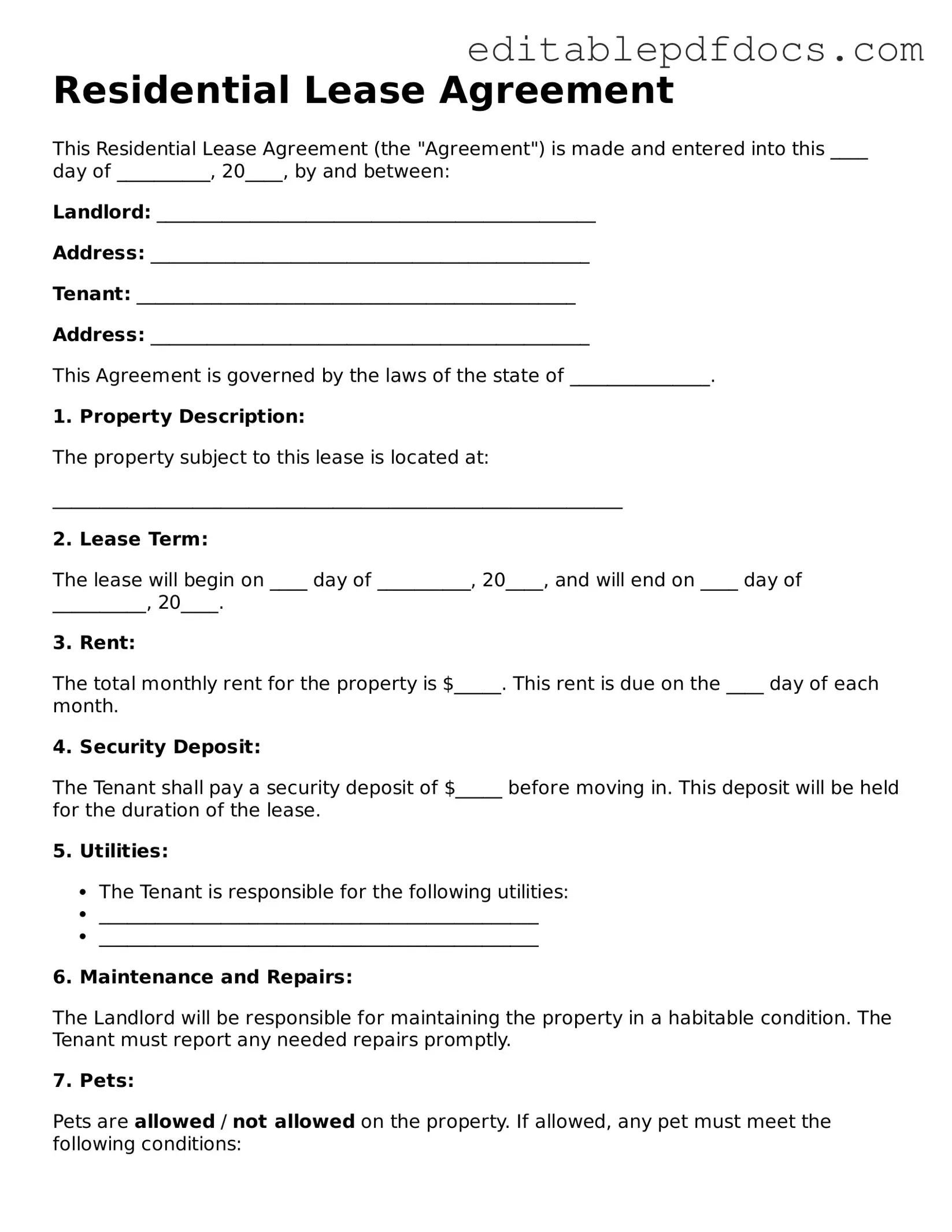Free Lease Agreement Document
A Lease Agreement form is a legally binding document that outlines the terms and conditions between a landlord and a tenant for renting a property. This form details important aspects such as rent amount, duration of the lease, and responsibilities of both parties. To ensure a smooth rental experience, it is crucial to fill out the Lease Agreement form accurately and completely.
Click the button below to fill out the form.
Open Editor Now
